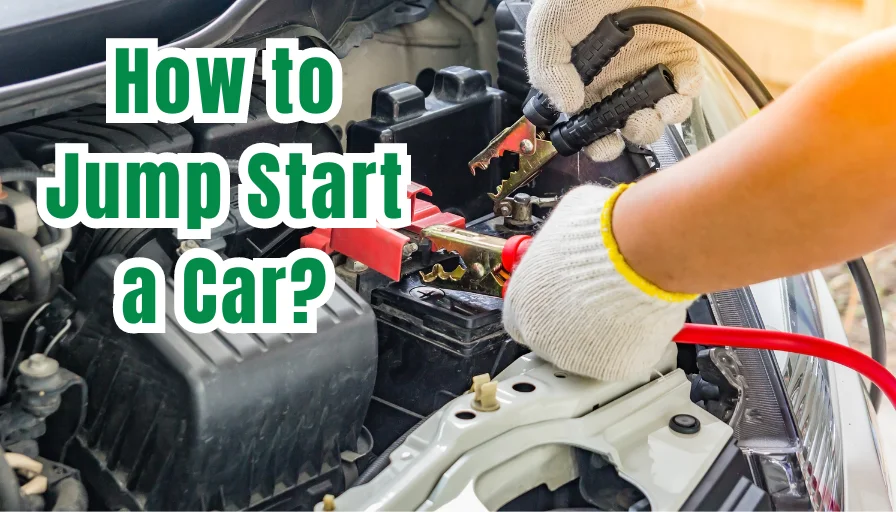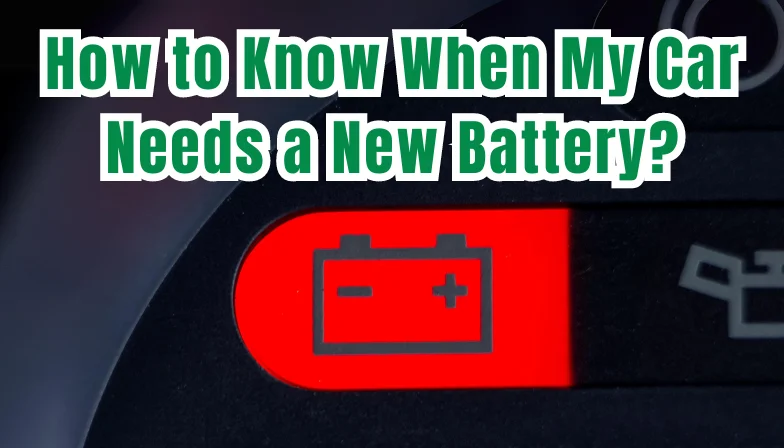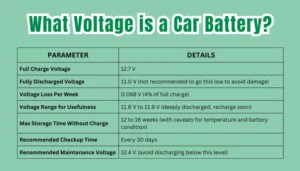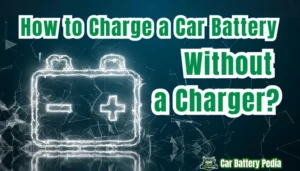Table of Contents
Introduction
Car batteries are akin to the heart of your vehicle, powering everything from the ignition to the headlights. However, when you find your car battery draining more often than it should, it’s not just frustrating;
It signals underlying issues that need immediate attention.
In this post, we’ll explore the common reasons behind a car battery’s premature exhaustion, backed by firsthand experience and in-the-field insights, to help you understand and tackle this problem effectively.
Understanding the Basics of Car Battery Draining
Before we get into why car batteries sometimes run out of juice, let’s talk about what a car battery actually does. Think of your car battery as a big storage box for electricity. It holds all the power your car needs to start the engine and keep things like your lights, radio, and other electronic gadgets running even when the engine isn’t.
But, like anything that stores energy, a car battery can run out of power. Several things can cause this, and when it happens, you might find yourself trying to start a car that just won’t budge.
It’s like when your small handy flashlight dies because you’ve left it in a drawer or in a bag without turning it off; similarly, your car battery can go flat and leave you stuck.
So, understanding the basics of how your car battery works and what affects its charge is the first step in solving the mystery of why it sometimes leaves you stranded.
1. Human Mistake
One of the top reasons car batteries run out of power is, well, a bit of forgetfulness or simple mistakes we humans make. It happens to the best of us!
Maybe you’ve left the headlights on, or the interior lights were still glowing, or even the radio kept playing after you turned off the engine.
These things might seem small, but they can really suck the energy out of your battery.
I’ve learned from personal experience that it’s super easy to accidentally leave something on. For instance, if you don’t shut a car door all the way, the interior light might stay on the whole night. You might not notice it, but that light is steadily using up the battery’s power. Then, when you try to start the car in the morning, you’re greeted with silence because the battery’s gone flat.

These kinds of mistakes are pretty common and can lead to a drained battery before you know it. It’s like leaving your phone on all night with a bunch of apps open; eventually, the battery’s going to run out. That’s why it’s important to double-check that everything is turned off in your car before you walk away. A quick look can save you from a dead battery situation.
2. Parasitic Drain Beyond the Normal Range
When we talk about car battery health, we often hear the term “parasitic drain.” This refers to the electrical power your car uses when the engine is off. Some level of parasitic drain is normal and necessary for your car’s basic functions, like the clock, alarm system, and radio presets. But when the drain is too high, it can cause your battery to die unexpectedly.
There are many reasons why your car might have an excessive parasitic drain. It could be caused by faulty electrical components, like an older radio that doesn’t turn off properly. Or it could be a more complicated issue, like a short in the wiring. Even modern cars, with their complex computer systems and sensors, can have parasitic drains caused by software malfunctions or issues with sleep mode.
It’s not easy to find the root cause of excessive parasitic drain because cars have complicated electrical systems. An experienced mechanic or auto electrician can use a tool called a multimeter to measure the electrical draw and figure out where the problem is. Also having a multimeter in your glove box will make you confident to check your car battery’s health.
It’s important to know what the normal resting current draw is for your car.
The Universal Technical Institute (UTI) states that it’s normal for vehicles to have some battery drain even when all electronic devices are off. They explain that, usually, newer cars have a parasitic draw (which is the small amount of electrical current that continues to flow) of about 50 to 85 milliamps, while older cars often have less than 50 milliamps of drain.
Preventing parasitic drain is important. Regular maintenance checks, not leaving accessories plugged in or devices turned on, and addressing any electrical issues right away can help.
If you notice that your car’s interior lights are flickering or the radio isn’t working right, it could be a sign of a bigger electrical problem.
Newer telematics and vehicle tracking systems can also cause parasitic drains. These systems need power to work, even when the car is off. It’s important to understand how these systems affect your car’s electrical system so you can make informed decisions about using them.
In conclusion, some parasitic drains are normal, but too much can cause problems. If you notice signs of an abnormal drain, it’s important to get help from a professional to find and fix the problem. Taking steps to prevent excessive parasitic drain and keep your car battery healthy will help your car’s electronic components work reliably.

Let me tell you about a time I faced a problem called parasitic drain with my car’s battery. I bought a new screen for my car and installed it myself. Everything seemed fine at first. But the next morning, when I tried to start the car to go to work, something was wrong. The lights on the dashboard flashed, but the car wouldn’t start. The battery was completely dead. Luckily, I had an excellent jump-starter to help start the car, and I used it to get going.

Then I checked the cables because I thought there might be a problem. And I was right. There was a socket with a wire sticking out. And he was touching the bare end of another free wire. When I fixed this problem, everything worked fine again.

This experience taught me a lot. I learned that adding new things to your car can sometimes cause problems if you’re not careful. It’s important to know how your car’s electrical parts work, especially when you’re adding or changing things. Also, checking your car often can help you catch and fix issues before they get bigger.
3. Faulty Charging System
The charging system of your car, which mainly involves the alternator, is super important because it’s what charges the battery while you drive. If something goes wrong with this system, the battery won’t get the charge it needs and will start losing power much quicker than normal.
I learned how crucial this is from a personal experience with my ex-car.
It was six months ago. I’ve been having trouble starting the car for the last few days. I thought that the car’s battery could no longer hold much energy due to its age. In those days, I went to a car parts store and bought a new battery.
But the next day I encountered the same problem again. The car was having difficulty starting. And that time I understand that the alternator might have been dying. But the car needed fuel and I have to go to the closest petrol station. So, I started the car and got on my way.
While going up a small hill, suddenly many malfunction warnings and fault lights started to light up on the dashboard. ABS light failure, hydraulic brake failure, ignition system failure, power steering failure, all warning lights came on and warning messages were displayed on the screen. It was like the car was out of control. This was the first time in my life that such an incident happened to me.
I immediately stopped the car, trying to pull over and park the car in a suitable place. Because I was driving on a road with busy traffic. And it was really difficult to control the car, the steering wheel was so heavy that I had to turn it with both hands and the brakes were not braking fully. When I got to the side of the road, I had to stop the car completely with the handbrake.
I called the roadside assistance service and explained the situation. I remember waiting for the roadside assistance service for a couple of hours, which felt like forever!
After the technician arrived and tested my car with his portable battery, he confirmed the problem was with the alternator not doing its job of charging the battery. The alternator was completely dead. I ended up having to tow the car to the closest mechanic to get it fixed.
If you want to learn more about how to test an alternator, check the link below.
This whole ordeal really showed me how important it is to have regular checks on your car’s charging system. A simple maintenance check can spot these issues before they leave you stranded.
Trust me, having all these malfunction errors while you are driving on a busy road and trying to pull over a nearly dead car is a nightmare. Then, waiting on the side of the road for help and having to tow your car is not fun at all.
It’s much better to catch these things early and avoid the hassle and the wait.

4. Extreme Weather Conditions
Did you know that the weather can really mess with your car battery? Yep, when it gets super hot or really cold, your battery feels it, too. In cold weather, the battery has to work harder because the cold increases its internal resistance. This means when you turn the key, the battery struggles more than usual to start the engine. It’s like trying to run in deep snow; you have to put in extra effort to move forward.
On the flip side, when it’s hot outside, things inside your battery get busier, too. The heat speeds up the chemical reactions in the battery, which might sound good, but it actually wears out the battery faster. It’s like when you’re exercising in the sun; you get tired more quickly because your body is working overtime to keep cool.
Through my own experiences, especially after going through a really cold winter and a super hot summer, I’ve learned how important it is to keep an eye on my car battery. Now, I make sure to check its condition more often, especially when the seasons change. If the weather’s going to be extreme, I take extra care to ensure my battery is in good shape and ready to handle the stress. This way, I can avoid getting stuck somewhere because my car won’t start. It’s all about being prepared and knowing how these temperature changes can affect your car’s battery life.

5. Ageing Battery
Just like everything else, car batteries don’t last forever. They usually have a life span of about 3 to 5 years. As batteries get older, they can’t hold onto their charge as well as they used to, which means they get drained more quickly. It’s kind of like how a rechargeable battery for a mobile phone to last shorter and shorter after a lot of uses.
Minimizing the Risk of Car Battery Draining
To prevent your car battery from draining, consider adopting the following practices based on firsthand and in-the-field experience:
- Regularly check your vehicle for lights or electronics left on.
- Schedule periodic electrical system inspections to identify any excessive parasitic drain.
- Keep an eye on the health of your car’s charging system, particularly the alternator.
- Be mindful of the impact of extreme temperatures on your battery and take preventive measures, like using a battery blanket in cold climates.
- Monitor the age of your battery and replace it as recommended by the manufacturer.
Understanding what leads to a car battery draining and how to address these issues is key to ensuring your vehicle is always ready for action. This isn’t just book knowledge; it’s real-world wisdom gleaned from hands-on and in-the-field experiences.
My aim in this guide is to equip you with all my experience and knowledge and know-how to prevent battery drain and make your journeys smooth and hassle-free.
We’ve explored various reasons why batteries lose charge, from simple oversights like leaving lights on to more complex problems like ageing batteries or faulty charging systems. With this knowledge, you’re better equipped to maintain your car’s battery health and avoid those inconvenient moments when your car won’t start.
Remember, being proactive about your car’s battery maintenance can save you time and stress in the long run. Regular checks and understanding the signs of battery wear and tear can make all the difference in keeping your car reliable. So, use this guide as your roadmap to battery care, and drive confidently, knowing that you’re prepared to tackle any battery issues that come your way.
Please note that this post contains affiliate links. This means if you click on a link and make a purchase, we may receive a small commission at no extra cost to you. Our reviews and recommendations are based on our own opinions and analysis, and we aim to provide you with the most accurate and helpful information to make your decisions. Your support helps us continue to provide valuable content. Thank you for your understanding and support.








